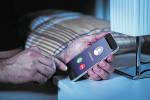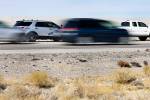Stay safe while summer sizzles
By SHARON CHAYRA
VIEW ON HEALTH
With nearly year-round sunshine and close proximity to mountains and lakes, southern Nevada affords residents and visitors great potential to enjoy the outdoors. But being in the outdoors can also present potential problems for the unprepared.
“Unintentional injuries account for the largest number of deaths to kids 14 years and younger,” says Jeanne Cosgrove, a registered nurse and Executive Director of SAFE KIDS Clark County. This non-profit injury prevention agency is tasked with educating parents and caregivers about preventing tragedies to the state’s smallest citizens.
“Injuries happen year-round which is why much of our focus is often on the season,” says Cosgrove. “Summer is considered ‘trauma season’ because emergency rooms report a spike in the number of patients especially around holidays like Fourth of July and Labor Day.”
SWIM SAFE
Summer brings longer days, vacations from work and school and sweltering sun so that folks love to jump in the swimming pool. Southern Nevada leads the nation in the number of residential swimming pools; this is considered the primary reason drowning is the leading cause of death to kids 4 years old and younger. “While most drownings are in swimming pools, children can succumb in bathtubs, pails of water, spas, ponds, and even doggy-bowls,” says Cosgrove. “Preventing drowning comes down to the core principle of NEVER leaving a child unattended. Not for a second, not for a minute. Ever.”
To keep children safe around water:
* Secure the backyard swimming pool with perimeter fencing, preferably wrought iron and at least 5′ tall. A self-latching, self-closing gate is recommended with safety mesh so that inquisitive youngsters can’t open it themselves to get into the pool area;
* Remove doggie doors leading to the backyard or potential drowning areas;
* Cover the spa with a lockable cover when not in use;
* Remove enticements from the swimming pool when it’s not in use including patio furniture, which might be used to climb over the fence;
* Install a motion detector alarm on the doors, windows, and sliders leading to the pool areas, as well as the pool itself.
* Have all family members trained in CPR, as well as making sure safety equipment is in place (i.e., buoys, poles) including a cordless should an incident occur.
While kids are the focus of drowning prevention, it’s important to note that adults are at risk too. Cosgrove explains, “Most of the adult drownings occur in lakes like Lake Mead. People get tired and over-estimate their swimming abilities or have been drinking and their decision-making is compromised. And in rare occurrences people drown when they’re trying to help someone else who is in trouble.”
National Parks Service personnel encourage boaters, swimmers and water-skiers to always wear a life jacket when swimming, fishing or playing at Lake Mead. In addition, SCUBA divers must fly a diver’s flag and water-skiers must have an observer accompany the boat operator and display a ski flag when a skier is in the water.
HEAT
As the mercury rises, so do the risks associated with heat. “It’s not just thermal burns like sunburns, it’s also dehydration and children being left in cars,” says Cosgrove.
Children, seniors, the overweight, those who work outdoors and those with chronic health conditions or who are on medications are particularly vulnerable to heat related injuries. According to the Southern Nevada Health District, in a normal year, approximately 175 Americans die from extreme heat. Because men sweat more than women, men are more susceptible to heat illness because they become dehydrated more quickly.
Sunburns are relatively easy to prevent and the use of sunblocks of 30 with UVA and UVB protection are advised as well as wearing hats, protective clothing, remaining in the shade or avoiding the midday sun between the hours of 11 a.m. and 3 p.m.
Heat illness that results in heat stroke is actually a progressive three-stage problem. The first and most easily treated heat-related illness is heat cramps. When the body is depleted of salt and water, it can cause the muscles to cramp. Drinking water and sports drinks is advised as well as stopping all activity and resting in a cool area. If cramps don’t subside within the hour, you may be on the verge of heat exhaustion.
Heat exhaustion can happen to anyone but is often seen in the elderly, those working or playing on a hot day or people with high blood pressure. The signs of heat exhaustion include excessive sweating, nausea, muscle cramps, dizziness and paleness. Treatment includes being in an air-conditioned environment, removing excess clothing, drinking cool, non-alcoholic beverages and possibly a cool shower or bath. Left untreated, heat exhaustion may develop into heat stroke. Heat stroke is a true medical emergency and prompt treatment is required.
Heat stroke requires immediate cooling measures. If a person is in heat stroke, they will not sweat. Instead, their skin will be red, hot and dry. They often have a rapid pulse and complain of a headache. They may appear confused or slip into unconsciousness. If heat stroke is suspected, activation of the 911 system is essential and getting the victim to a cool area, preferably indoors is important. They must be cooled promptly. Fanning them, a wet sheet or misting them with cool water can be done. If the victim is awake and alert, a cool shallow bath can be done. Unlike heat cramps and heat exhaustion, do not give fluids to a heat stroke victim!
Lastly, once a person has suffered from a heat related illness, the chances of them suffering a more severe reaction the next time is virtually assured.
Leaving children in cars is a serious and potentially lethal problem. According to Harrison’s Hope, a non-profit organization to keep kids safe in and around cards reports that in 2010 alone, there were 49 fatalities nationally of kids left in cars. Says Cosgrove, “You wouldn’t leave your ice cream in the car, so why would you even consider leaving your child in the car even for a moment?”
CELEBRATIONS
Independence Day brings picnics, families and fireworks. Nationally, more than 4,000 fireworks-related injuries happen every year to kids 14 years and under. In Southern Nevada, it’s estimated that over 300 children will visit emergency rooms on July Fourth due to injuries to their hands, eyes and head from fireworks.
Access to illegal fireworks is easy, which makes the potential for injury and misuse all the greater. According to the City of Las Vegas Fire and Rescue, Safe-N-Sane fireworks are the only ones tested and approved by all valley fire departments during the Independence Day weekend.
Illegal fireworks are dangerous because they can fly through the air, explode or rotate on the ground. Even Safe-N-Sane fireworks can cause injury and are capable of starting fires, so caution and common sense are important when using. Having a responsible adult handling the fireworks is essential but so are observing safety rules such as:
* Fireworks should be used on a flat, firm surface such as the ground or a driveway. Fireworks are illegal on the street and sidewalk.
* Keep fireworks away from bushes, grass, trees or anything else that might catch fire including vehicles.
* Have a bucket or water and/or a garden hose available for use in case of fire. You might also want to have a designated 911 dialer with mobile phone appointed just in case an emergency happens.
* Used fireworks should be picked up with a shovel, dropped into a bucket of water and left to soak for several hours before being discarded in the trash.
While many enjoy picnics in the park, the local fire departments remind you that fireworks are not permitted on federal property, which includes all parks and recreational areas such as Lake Mead, Mount Charleston, Spring Mountains and Red Rock.
When thinking of fireworks safety, don’t neglect fire safety in the home. Families are encouraged to plan fire escape routes, have working fire detectors in every room in the house and regularly practice fire drills including how to use fire extinguishers.
TRAVEL
Summer is the driving season, and many head out on road trip vacations at this time of year. Vehicle safety starts with the purchase of a sound car and continues through good maintenance and use of safety devices like seatbelts and car seats.
According to Safe Kids Worldwide, motor vehicle crashes remain the leading cause of accidental injury-related death among children ages 14 years and younger. Seventy-five percent of motor vehicle crashes occur within 25 miles of home, and 60 percent of crashes occur on roads with posted speed limits of 40 mph or less.
Nevada law requires that children must ride in appropriate child restraints until six years of age and 60 lbs. However, children won’t fit the vehicle seat belt correctly until about the age of nine years. So while it is not required, safety organizations encourage the use of booster seats. “Booster seats are the safety way to make sure your child is restrained when he or she has outgrown their carseat but is too small for the seat belt alone,” says Cosgrove.
In Clark County, SAFE KIDS Clark County reports a car seat misuse rate of 98 percent. “This is why we provide free car seats to financially eligible families and host car-seat inspection and installation checks throughout the valley for free,” says Cosgrove.
But travel is not just confined to the car, which is why use of seatbelts and child car seats is also recommended on airplanes, trains and even boats.
“Car seats can be expensive but we do not recommend getting them second-hand whether through a friend or thrift store, ” cautions Cosgrove as many are damaged or recalled.
THE GREAT OUTDOORS
The Southern Nevada Health District’s work includes ensuring public safety by monitoring communicable diseases. Among these diseases are West Nile Virus, Hantavirus and plague.
As Senior Epidemiologist for the Southern Nevada Health District, Brian Labus is tasked with monitoring public health threats the result of infectious diseases. Many of these diseases are the result of a complex ecosystem requiring humans, animals, seasons and select bacteria.
Rodents like the Desert Wood Rat are native to Southern Nevada and found most often in rural areas. In the city, roof rats have been reported since 1990 when they likely were hidden in some imported palm trees. Roof rats are nocturnal which means they are active at night and prefer areas near washes, standing water or with heavy vegetation. Rats present issues because they can carry and transmit plague, Typhus, Salmonella, Leptospirosis and other diseases.
While rural rodents have tested positive for plague and Hantavirus, no humans have been infected according to the Southern Nevada Health District.
PLAGUE
Human plague is very rare and the name alone can incite panic and thoughts of the Middle Ages. According to the Centers for Disease Control and Prevention, there are only about 10 to 15 cases annually of humans infected with plague, usually in scattered rural areas — including western Nevada.
Plague is caused by a bacterium called Yersinia pestis, which is carried by fleas that feed on infected rodents. It falls into one of three forms including Bubonic, Septicemic and Pneumonic. Any form can be fatal if not treated but septicemic and pneumonic plague are more fatal because they are harder to recognize. The good news is that they are also less common.
Anyone can get the plague, but it’s most common among lab workers and young people. That’s because young people are more inquisitive and likely to find and play with a sick or dead rodent or they’ll play in an area where rodents live.
Infected fleas are the most common reason for plague so domestic animals like dogs and cats should routinely be treated for flea-prevention measures.
Symptoms of bubonic plague include a high fever, chills, severe malaise, diarrhea, headache and delirium. The reason for the name is based on the most distinctive symptom of bubonic plague and that is the swelling of the lymph nodes in the groin, armpits and neck. These swollen nodes are called buboes and become filled with pus and break open.
Septicemic plague symptoms are similar to bubonic only without an increase in the size of the lymph notes. Pneumonic plague affects he lungs and causes cough, bloody sputum, high fever and chills.
The first line drug of choice for treating plague is Streptomycin but Tetracycline or chloramphenicol have also been used.
The best way to avoid plague is to wear long-sleeved clothing when camping or hiking, avoiding flee infested areas during summer months and using insect repellents containing DEET.
LYME DISEASE
Lyme Disease has made headlines since the late ’80’s and notable figures including Richard Gere, Tom Seaver and President George W. Bush have been afflicted with the disease.
“Lyme Disease is a tick-born infectious disease. In its initial stages it causes a distinct bullseye rash and if not treated can lead to chronic health problems like arthritis and cardiovascular issues,” says Labus.
Fortunately, Southern Nevada does not have the delicately complex ecosystem necessary to let Lyme Disease flourish. Labus says, “The areas we see it most are the eastern states, New England, parts of the upper Midwest. It requires a perfect balance between a certain species of tick, large animals, forest and a bacterium called Borrelia borgdorferi.”
Lyme Disease is typically treated with antibiotics.
HANTAVIRUS
Hantavirus pulmonary syndrome is a serious respiratory disease transmitted by infected rodents through urine, droppings or saliva. Humans have contracted the disease by breathing in the virus.
Although uncommon, the common deer mouse is the primary culprit spreading the disease in Southern Nevada. About 12 percent of the deer mice tested by the Southern Nevada Health District were found to be infected with the virus.
People can get Hantavirus by touching or breathing dust where there are rodent droppings or urine. The early symptoms include flu-like symptoms but rapidly progress to cause breathing difficulties. In fact the fatality rate for Hantavirus is 50 percent because the lungs fill with fluid.
There is no specific treatment, cure or vaccine for preventing Hantavirus infection, which is why prevention is key to avoiding this disease. This includes rodent control, avoiding using rodent-inhabited buildings or disturbing nests. When camping and outdoors, don’t camp near places where rodents find shelter such as woodpiles and garbage dumps and use only bottled water for drinking, cooking, washing and brushing teeth.
WEST NILE VIRUS
West Nile Virus is carried by mosquitoes and is represented by six different species. The proliferation of stagnant swimming pools due to the foreclosure crisis has provided the mosquito plenty of breeding opportunities. Mosquitoes become infected when they feed on infected birds.
The presence of dead birds may be a sign that West Nile virus is circulating between birds and the mosquitoes in the area. West Nile virus is not spread from person-to-person.
Approximately 80 percent of people infected with West Nile virus will not show any symptoms but 20 percent will. These might include fever, body aches, skin rashes, swollen lymph glands and nausea and vomiting.
According to the Southern Nevada Health District, about one in 150 people infected with West Nile virus will develop severe illness including convulsions, vision loss or paralysis.
There’s no specific treatment for West Nile virus short of managing the symptoms. In severe cases this requires hospitalization. Prevention, like all communicable diseases, is preferred and can be achieved by using insect repellents containing DEET, wearing long pants and long-sleeved shirts when outdoors, avoiding spending time outside when mosquitoes are most active, eliminating standing water including bird baths and using mosquito netting when sleeping outdoors or in an unscreened structure.
Enjoying the summer months can be lots of fun but consideration must be given to safety.
As Labus points out, “Taking the appropriate precautions and asking your doctor if you have questions is the best way to remain healthy.”


















